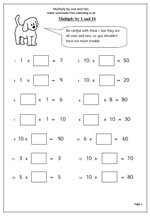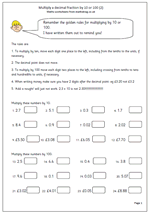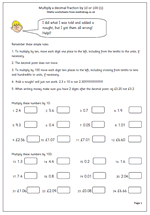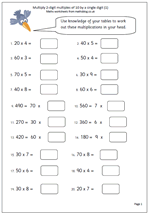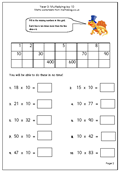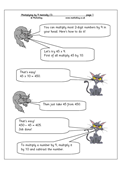We often presume that much of what young children have to do in maths is self evident and easily understood by them. However, often this is not the case, especially if children have missed some time or not had enough practice to consolidate their learning. Here we have a simple exercise to just check that children really know what happens when numbers are multiplied by one and ten.
This page can be found in our Year 2, Know Number Facts section.
